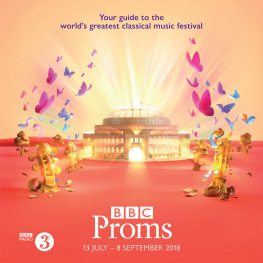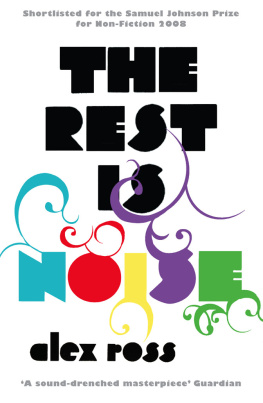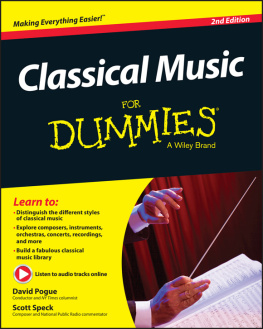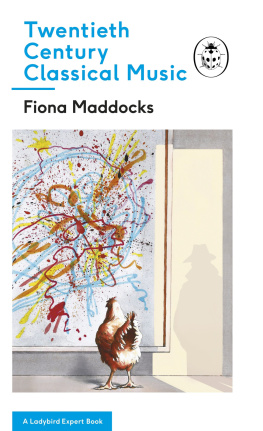The Art of Appreciation
Research for chapters 13 and 57 was funded by a British Academy postdoctoral fellowship. Research for chapter 4 was funded by an Arts and Humanities Research Council postgraduate award (ref. AH/I501185/1).
Support for this book was generously provided by the AMS 75 PAYS Endowment of the American Musicological Society, supported in part by the National Endowment for the Humanities and the Andrew W. Mellon Foundation.
The publisher and the University of California Press Foundation also gratefully acknowledge the generous support of the Richard and Harriett Gold Endowment Fund in Arts and Humanities.
The Art of Appreciation
Music and Middlebrow Culture in Modern Britain
Kate Guthrie

UNIVERSITY OF CALIFORNIA PRESS
University of California Press
Oakland, California
2021 by Kate Guthrie
Library of Congress Cataloging-in-Publication Data
Names: Guthrie, Kate, 1987 author.
Title: The art of appreciation : music and middlebrow culture in modern Britain / Kate Guthrie.
Other titles: California studies in 20th-century music ; 30.
Description: Oakland, California : University of California Press, [2021] | Includes bibliographical references and index.
Identifiers: LCCN 2020051224 (print) | LCCN 2020051225 (ebook) | ISBN 9780520351677 (cloth) | ISBN 9780520975897 (epub)
Subjects: LCSH: MusicSocial aspectsGreat BritainHistory20th century. | Music appreciationGreat BritainHistory20th century.
Classification: LCC ML3917.G7 G87 2021 (print) | LCC ML3917.G7 (ebook) | DDC 780.941/0904dc23
LC record available at https://lccn.loc.gov/2020051224
LC ebook record available at https://lccn.loc.gov/2020051225
Manufactured in the United States of America
30 29 28 27 26 25 24 23 22 21
10 9 8 7 6 5 4 3 2 1
To Adam, in deep appreciation of all your support
Contents
Figures and Music Examples
FIGURES
MUSIC EXAMPLES
2.1.
2.2.
2.3.
3.1.
4.1.
4.2.
4.3.
4.4.
6.1.
6.2.
6.3.
6.4.
CHAPTER 1
The Art of Appreciation
It was not without reservations that BBC Television agreed to broadcast Leonard Bernsteins Young Peoples Concerts. Sometime around the start of 1967, Columbia Broadcasting System had been in touch with Humphrey Burton, head of Music and Arts Programmes at BBC-TV, to try to persuade the corporation to purchase a few of the programs. From the American point of view, this was an opportune moment to expand the series international reach.
On the other side of the pond, the desirability of airing the series was less certain. In the Concerts favor, their mission resonated with a Whats more, whatever Bernsteins approach lacked in innovation, it made up for in tried and tested familiarity. Somewhere between an illustrated talk and a symphony concert, each program began with a question about music that Bernstein explored using a combination of verbal explanation, short keyboard illustrations, and long extracts from orchestral works. Almost as old as the American symphony orchestra itself, this kind of event had been a staple of music education on both sides of the Atlantic for over half a century. Able to speak with genial clarity, Bernstein was a master of the genre.
However, his expertise did not seem to be matched by the standard of production. When BBC-TV producer Walter Todds reviewed the episode titled What Is Impressionism? he perceived a host of deficiencies. For one thing, the sound quality was abysmal and lacking in presence.
The discussions that must have ensued are undocumented in the BBC archives, but they culminated in the broadcasting of three Concerts. What Is Melody?, What Is Sonata Form?, and What Is Impressionism? aired on BBC1the less highbrow of BBC-TVs two channelson consecutive Sunday afternoons in December 1967. On the other hand, Bernsteins easy-going manner was just what was needed to make the love of good music... an accepted and natural thing. Since British music educators tended to suffer from prissiness or a patronizing attitude, there was a lesson to be learned here. The programs, Spence advised, were well worth the attention of any adult who is fascinated by... fostering the growth of musical knowledge in children.
In their aims and methods, Bernsteins Young Peoples Concerts were designed to promote what an earlier generation of educators would have called music appreciation. This entailed far more than simply enjoying music. Rooted in the idea of listening as an art, appreciation described a process of acquiring specialist theoretical, historical, and biographical knowledge that would supposedly lead to enhanced musical understanding. Yet Bernsteins celebrated Young Peoples Concerts are a powerful testament to its pervasive and persistent presence in twentieth-century musical lifenot just in the United States, but also in Britain and beyond.
This book explores why and how music appreciation came to have such a far-reaching and defining impactwell beyond its origins as a late-Victorian liberal initiative in music education. In so doing, it tells a much bigger story than that of a particularly influential educational undertaking. For inasmuch as the appreciation movement was an attempt to negotiate art musics place in a modernizing world, its concerns stretched far beyond music pedagogy. Efforts to nurture public interest in the arts inevitably intersected with questions about the commercialization of leisure. Discussions about how to manage the new forms of musical consumption facilitated by sound reproduction technologies were frequently bound up in debates about what good citizenship entailed. Disputes over the parameters of the Western art music canon reproduced wider tensions around the value of expert opinion. Educational initiatives were embedded in international cultural politics, as artists, educators, philanthropists, and policy makers (to name a few) worked within a transatlantic context and against the backdrop of a globalizing leisure industry. In short, music appreciation was entangled in a nexus of modern problems around leisure, education, and citizenship. Its history thus offers a powerful lens onto the central debates of twentieth-century musical culture.
I want to be clear at the outset: this is not intended as a story of social progress and national enlightenment; nor is it a critique of an embattled elite caught in an increasingly futile struggle to protect high art from the modern threats of extinction on the one hand, or commodification on the other. The tension between sympathetic and censorious readings runs through the expanding body of scholarship on the creation and evolution of cultural hierarchies. The networks of individuals who promoted high artwhether ideologically, in practice, or bothhave at one time or another been painted in both roles. Sometimes they have been defended as benevolent social reformers: an intellectual aristocracy (to borrow Nol Annans famous coinage) whose commitment to democratic ideals was expressed through a well-meaning paternalism that ran the risk of leveling artistic standards.
To chart the shifting contours of these debates, I focus on the decades from the 1920s, when rapid advances in sound reproduction technologies fueled new patterns of musical dissemination and consumption, to the early 1960s, when a burgeoning popular youth culture presented a new and powerful challenge to the highbrow/lowbrow dichotomy, at the same time as the heightened interest in the postwar avant-garde started to make its mark on music pedagogy. While remaining attuned to the international dimensions of the music appreciation movement, I center my account on Britain, grounding transnational debates in a specific set of historical concerns and historiographical trends. The remarkable accumulation of initiatives to create a larger and more diverse audience for art music in mid-twentieth-century Britainand their enduring presence todaymakes it a rich context for this study.
Next page








